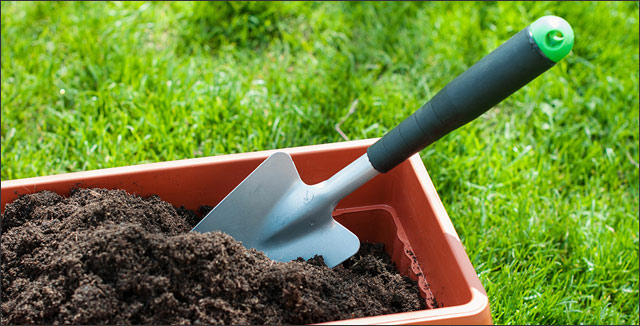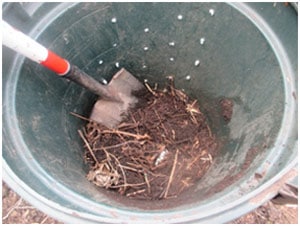Composting Strategies for the Busy Gardener

Have you ever wondered what to do with the cut off greens of strawberries, or the core of an apple? Or ever wonder if there is another option for your fall leaves other than bagging them up and maybe even spending money to have your city pick them up? Composting might be the answer for you.
Composting is the process of mixing organic kitchen waste with yard waste which allows the decomposition process to break down the material to create enriched soil.
Using kitchen scrapes and leaves are the perfect way to start a compost pile or bin. Studies show that when one family composts, they can save over 700 pounds a year from landfills. Adding a compost bin to your yard is an easy way to cut back on waste while creating amazing fertilizer for your home garden.
However, it can feel intimidating at first to compost. There is so much information out there regarding composting, and it can leave one feeling confused. Not knowing exactly what can or can’t go into a compost pile can leave a person feeling unsure of starting such a project.
Here are a few key ideas to keep in mind to help you create an easy compost pile or bin and leave you feeling great about playing your part in helping the environment and providing amazing fertilizer to your own garden.
Composting – It’s not as complicated as you think
When left alone, garden scrapes and yard waste will decompose on their own. When attempting composting, you really cannot go too wrong. The goal of composting is to accelerate the process. So, the idea is to experiment and find what works best for you.
In fact, formulas and trying to find the correct ratio can make home composting much more complicated than it needs to be. Some composters have found it helpful to use two parts brown to one part green. Using this formula is just an option, not something that has to be done. The more you try and experiment, the better understanding you will get as to what your compost pile will need.
Getting tripped up on this step can hold back some people from composting altogether. Focus your time on what you can add to your compost bin instead of a ratio or formula. You can compost anything that started from a plant – which is called organic matter. This can be anything from orange peels to rotten pumpkins from Halloween. Cutting down the pieces will help the decomposing process as well.
If you are still not sure, you can review a list of over 163 items you can compost from PlanTea from freezer burnt vegetables and stale bread to watermelon rinds. You might be surprised at how many items that you can actually add to your compost.
When it comes to adding your kitchen scraps, keep a bin inside your refrigerator. As you cut up potato skins, or peppers, the waste that they create can be put into those bins. Then when you have time, you can go outdoors and add it to the compost area. This helps from feeling like you have to go to the bin every time you are chopping up something.
Compost Hot or Cold
Composting can be done in two ways: hot composting which requires a little more attention and provides fresh compost as often as every month. Or, you can cold compost, where you pile your scrapes and leave it alone.
In hot composting the idea is that the temperature of the mixture will help break down the material. Having a compost bin can be a great way to ensure the temperature. The ideal temperature of your compost can be from 140 – 160* Fahrenheit. You might even see steam coming off your pile. This way, you also need to make sure that you are shifting the material every day to every week or so.
Cold composting is the idea of allowing common earthworms to break down your material for you. This process takes a much longer time. It will provide broken down compost in around 6 months. In cold composting, you leave the material and don’t bother or touch it. The great aspect of this method is that it still provides rich amazing food for your garden and is very low maintenance.
Find a spot and get started
Starting to compost can be as easy as finding a spot in your yard and begin to layer that material together.

Upcycled trash can that was turned into compost bin by drilling holes in the sides.
If attracting rodents is a fear for you, think of placing your compost bin in a place where the least amount of damage can be done if that were to happen. However, having a compost bin that has a secure lid, should be enough to keep the rodents out. Remember that there is no need to run to the store and buy an expensive compost bin. You can upcycle old wooden pallets, old wire mesh, or even an old trash bin with a lid.
Composting is a fun and easy way to enhance your garden and leave you feeling amazing about helping the environment at the same time. While the science behind composting can leave one feeling intimidated, the process is actually pretty easy and any gardener could add one to their own backyard.
Take Away
Composting is an environmentally friendly way to provide rich nutrient packed organic material for your garden. With a few simple strategies, it doesn’t have to be an overwhelming and time consuming task for the busy gardener.
Your Turn
What is keeping you from adding a compost pile to your back yard? Is there a milestone that you are having a hard time overcoming? Please share your thoughts with us in the comments below.



